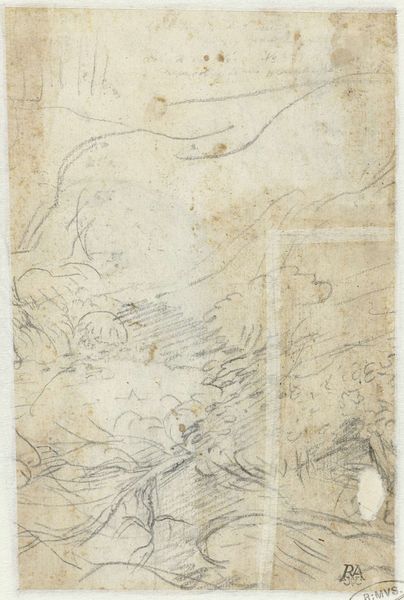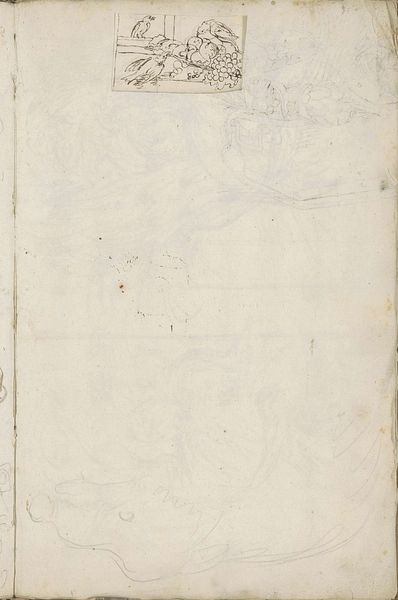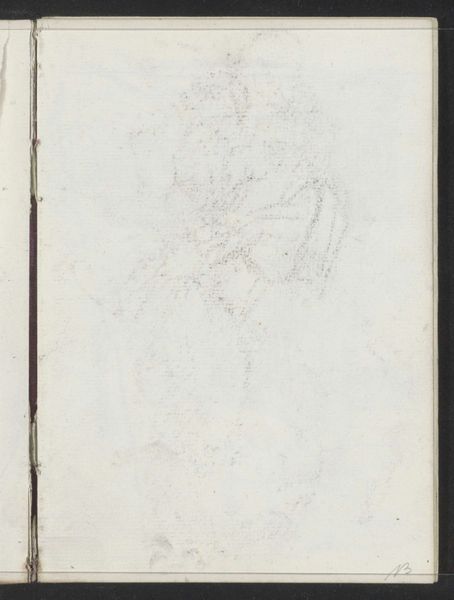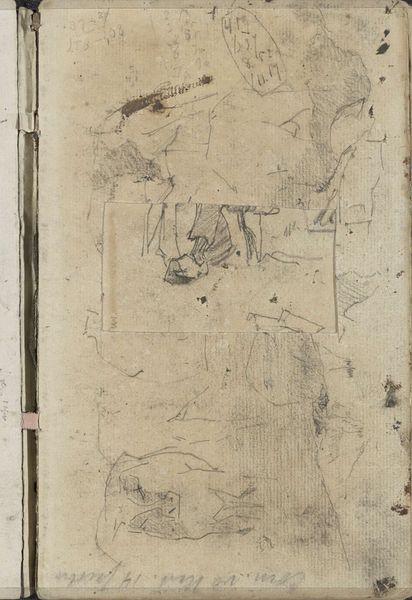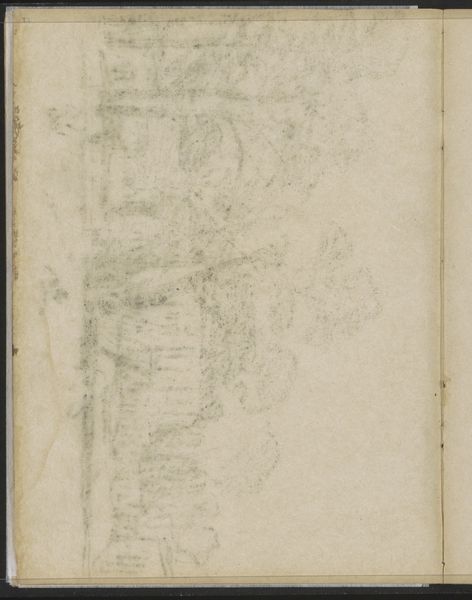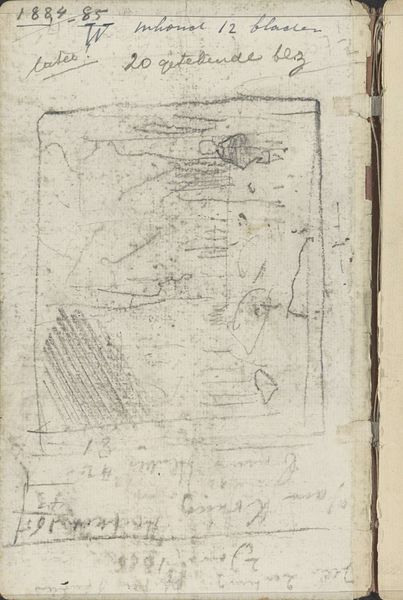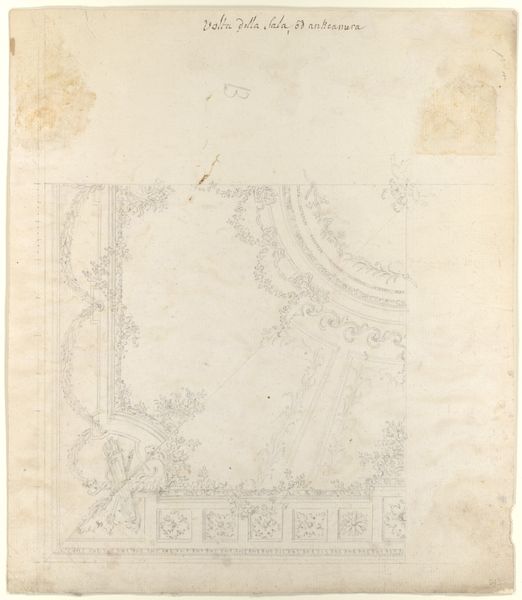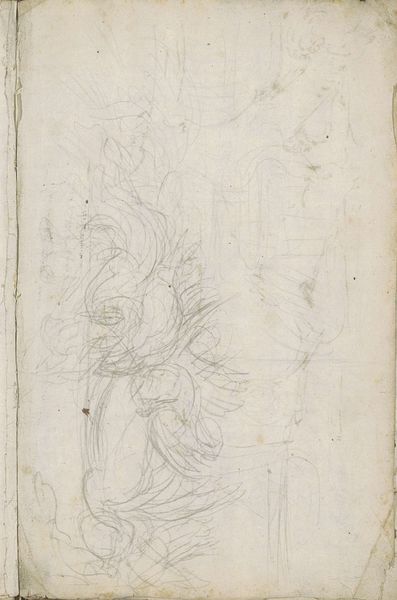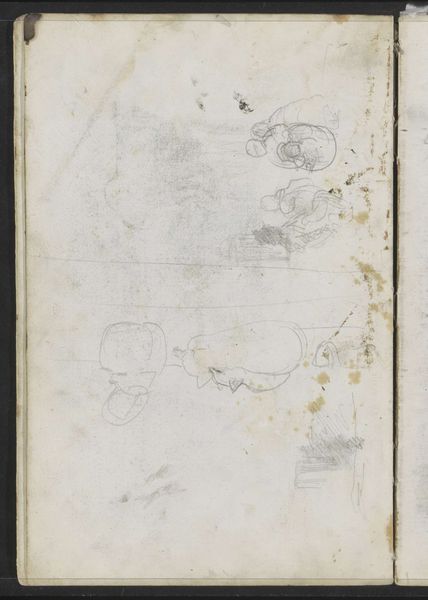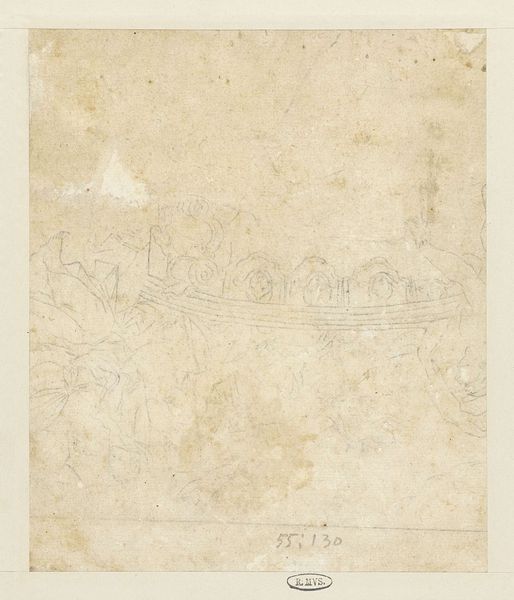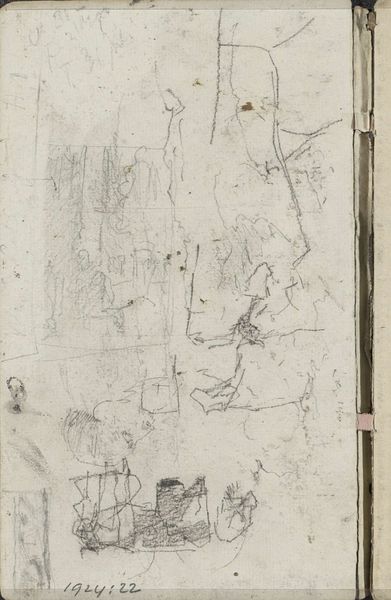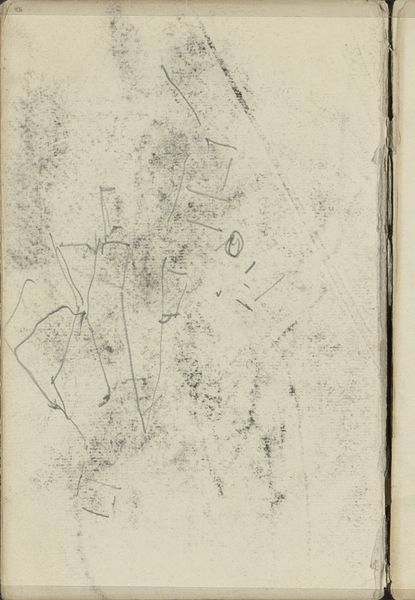
drawing, pencil
#
drawing
#
form
#
pencil
#
abstraction
#
line
Dimensions: height 275 mm, width 325 mm
Copyright: Rijks Museum: Open Domain
Curator: Editor: This sketch, "Compositiestudies van vissen in een aquarium" by Gerrit Willem Dijsselhof, probably created sometime between 1876 and 1924, is just pencil lines on paper, and at first glance, it's not easy to discern. There's a frenetic energy, though; lots of movement implied, but obscured somehow. What strikes you most about this piece? Curator: I see a direct commentary on the act of observation itself. Dijsselhof gives us 'studies,' implying scientific, objective inquiry. But consider the social context: Aquariums were becoming increasingly popular during this period, shifting the human/animal relationship. How do these quick sketches hint at this changing dynamic? Is it ethical? What does objectification do to our relationship with the natural world? Editor: Objectification. So you see this as the artist grappling with issues of the observer versus the observed? That’s not what I initially saw but… interesting! How does the medium – a sketch rather than a painting – inform that reading? Curator: Precisely! The pencil allows for a rapid, almost invasive capture of the fish in their simulated habitat. Dijsselhof isn't presenting a finished product, but exposing his own process, his own potential culpability in the act of watching. Also, consider the lack of color, how it diminishes the vibrant life of the fishes…does that lack highlight themes of commodification and control? Editor: That makes a lot of sense. It’s as if the sketch itself becomes a form of capture, reducing the living creatures to mere lines and forms, separated from any environment. Thanks for pointing that out. It’s a chilling idea, the aquarium itself now seems problematic! Curator: The sketch challenges our preconceptions and encourages us to examine our own relationship to power structures, both within the art world and beyond. What does it mean for an artist, or an art viewer, to take something from its habitat? Editor: Food for thought, indeed! I will keep those points in mind when encountering this piece next time.
Comments
No comments
Be the first to comment and join the conversation on the ultimate creative platform.
